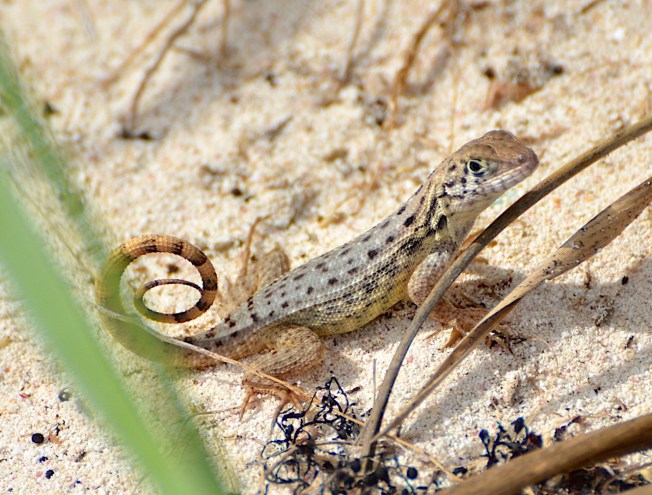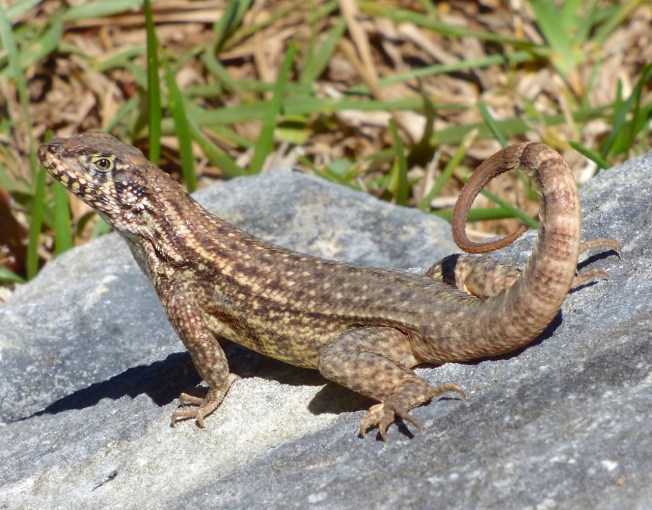CURLY-TAILED LIZARDS ON ABACO, BAHAMAS
The northern curly-tailed lizard Leiocephalus carinatus, to give it its full name, resembles a tiny dragon with a twist in the tail. These little critters bask in the sun, or scuttle away into holes and crevices as you approach them. I suspect that even a confirmed herpophobic would find some charm in them. They are, of course, completely harmless to humans.
Surprisingly, the Bahamas is home not just to one but five different curly-tail species, and nine sub-species. Broadly-speaking, the variants are found on different and specific islands and have discrete local markings. Mostly they are brownish, but they may also be grey or with a greenish tinge like this one I recently photographed.
Curly-tail males, being territorial, turn somewhat aggressive around breeding time, which is basically most the the year, from February to October. Behaviours indicative of their territorial claims include tail curling / uncurling (of course), head-bobbing, strutting about in an agitated way and inflating the sides of their necks in a threatening kind of way. The tiny-tails, 2″ long when born, are known as ‘hatchlings’.
An impressive poolside ‘double curly’
THREATS TO CURLY TAILS
According to the Bahamas National Trust BNT, the main dangers to the curly-tails of the Bahamas are:
- Dogs, cats, rats and introduced predators such as raccoons
- Collection for the pet trade – curly tails are unprotected by CITES listing (also cute)
- Collection of the rarer endemics by reptile enthusiasts seeking ‘exotics’
- Development and habitat destruction (though it is noted that curly tails seem to adjust quite well in developed areas)
A curly tails sloughs its skin as it grows, as with snakes and other reptiles
WHY THE CURLY TAIL?
- As mentioned above, for use in territorial posturing
- In courtship displays by males to attract females (luckily a method not available to humans)
- As a response to predators, confusing an attacker with movement at both ends
- As a last resort, to detach to aid escape (the tail re-grows)
- For fun and just because they can grow one and you cannot
Credits: all photos, Keith Salvesen except #2 & #6, Charles Skinner; BNT






I freak when I see a lizard 🦎 I bout pee’d my pants 12 yrs ago in east Tennessee when I saw a striped Phinx lizard ❗️
LikeLike
Yeah… but a curly tail so charming that it is more like a small friend than a real lizard
LikeLiked by 1 person
Greetings, You are the best! Keep up the fascinating portrayals of nature. Margo
LikeLiked by 1 person
Thanks Margo, very kind. I’m always happy to hear when someone has enjoyed some creature I have written about!
LikeLike
Hi Keith,
thanks for introducing us to this curly-taled lizard we had never seen before. Looks great!
Wishing you a wonderful rest of the week
The Fab Four of Cley
🙂 🙂 🙂 🙂
LikeLike
Adorable critter and fascinating commentary. A contender for the next Geico Gecko perhaps?
LikeLike